

Human geneticist Bryan Sykes, Ph. D. (born September 9, 1947) passed away December 10, 2020, in Edinburgh, Scotland, after a long illness.
Sykes was educated at Eltham College, received his BSc from the University of Liverpool, his PhD from the University of Bristol, and his DSc from the University of Oxford.
Sykes published the first report on retrieving DNA from ancient bone (Nature, 1989), and headed the genetic survey of Yeti and Bigfoot DNA.
Based on his genetics study, Bryan Sykes was named Cryptozoologist of the Year 2013. I learned later that independently and separately Daniel Perez’s Bigfoot Times named Dr. Bryan Sykes their “Bigfooter of the Year.”
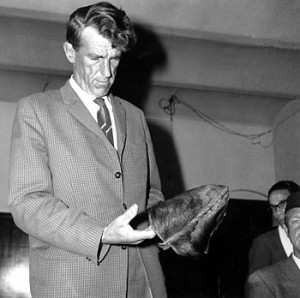
Since the time of Edmund Hillary’s ill-managed 1960 examination of Yeti evidence in Nepal, there had been a need for a serious re-inspection of all the evidence for the wide variety of Yeti material from a number of types of Yetis. Into the void stepped Dr. Bryan Sykes in about 2011.
Sykes told the cryptozoology researchers that he would work with them, if they would work with him. The geneticist had thrown down the challenge. After the fiasco of the Ketchem affair, many were careful, but eventually agreed to share hair samples with Sykes and his Oxford University-based study.
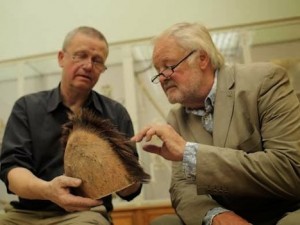
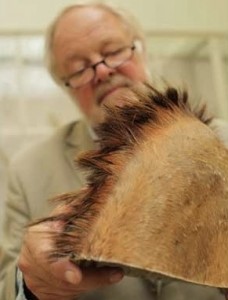
Globe-trolling with a crew from Channel 4/NatGeo to record the historically significant work he was doing, Sykes ended 2013 revealing the DNA findings regarding Yeti, Almas, and less so Bigfoot. He obviously had put in the effort scientifically.
The media would misunderstand what Sykes discovered or even said about his Yeti samples. But the results from just two samples of hair (one from Ladakh, the other from Bhutan) indicated he had identified a giant bearlike brown Yeti, and that Yeti researchers have figured a large, unknown bear accounted for one of the three kinds of Yetis.
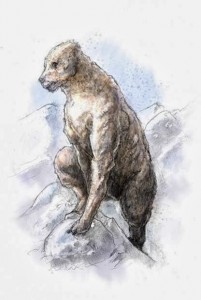
The news reports screamed that the Abominable Snowman mystery had been solved and that “Yeti is a Polar Bear” – sometimes with pictures of white polar bears. Both were incorrect media conclusions.
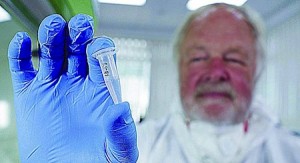
Sometimes the media seemed to be more a problem than a help in sharing some of Sykes’ statements. Take for example, this one:
Dr. Brian [sic] Sykes and his team at Oxford University carried out DNA analysis of presumed Yeti samples and thinks the samples may have come from a hybrid species of bear produced from a mating between a brown bear and a polar bear. Sykes told BBC News:
“I think this bear, which nobody has seen alive, may still be there and may have quite a lot of polar bear in it. It may be some sort of hybrid and if its behaviour is different from normal bears, which is what eyewitnesses report, then I think that may well be the source of the mystery and the source of the legend.”— Dr. Bryan Sykes, BBC News (17 October 2013)
Of course, note within this one alleged quotation Sykes is reported to have said “nobody has seen” this bear “alive,” but he is also noted as saying that “what eyewitnesses report” is “different from bears.” Was Dr. Sykes misquoted?
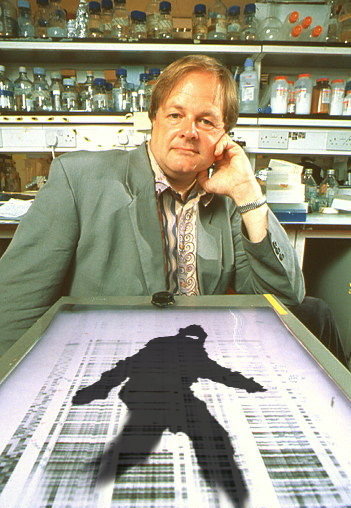
As I have mentioned here before and recently shared anew with Daniel Perez of Bigfoot Times, in the New Scientist on April 2, 2001, the following was published. It directly impacts on the Sykes’ samples:
Hairs found in a Bhutan forest could be those of the legendary Yeti, say makers of a TV documentary.
The cluster of hairs was found in a cedar tree by scientists who accompanied the documentary team. Sonam Dhendup, a local Yeti-hunter and guide, said the tree was the animal’s lair.
On returning to Britain, the team handed the hair to Oxford geneticists for analysis.
“It’s not a human, it’s not a bear, nor anything else that we’ve so far been able to identify,” says Bryan Sykes, professor of human genetics at the Institute of Molecular Medicine in Oxford.
“We’ve never encountered any DNA that we couldn’t recognise before, but then, we weren’t looking for the Yeti,” says Sykes, the first geneticist to extract DNA from archaeological bone specimens.
Sykes says that all other hairs handed in by the Yeti-hunting team were easy to identify, turning out to be pigs, for example.
An earlier, skin sample from Bhutan reputed to be from a Yeti was shown by Sykes to be that of a bear. But he is mystified by the hair sample. “We don’t know what it is; it’s behaving most peculiarly,” he says.
Rob McCall, an evolutionary biologist from the University of Oxford, reported finding scratch marks inside the cedar tree, which resembled claw rather than nail scratches.
McCall also discovered odd footprints just a couple of hours old. They revealed a short print with a narrow heel, plus toe pads rather than claws. Source.
While the documentary made of Sykes’ findings showed its quota of polar bear images, it also had an artist draw the following too. Some people did listen closely to what Sykes was saying.
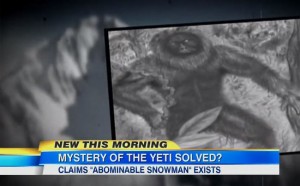

Sykes’ books covered and corrected the revealing of his findings.
Today, word of Sykes’ death shocked the world of hominology. In the wake of all the documentary footage of Sykes investigating the Bigfoot and Yeti cases, this news feels sudden.
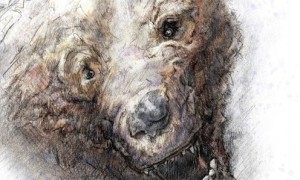
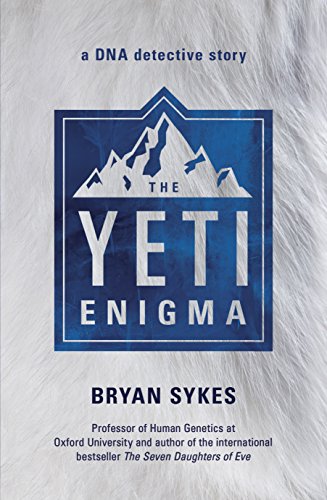
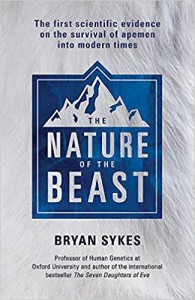
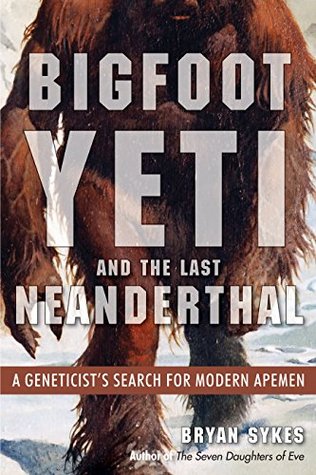
One chapter in Bryan Sykes’ book is entitled “The Guru” and it’s about Loren Coleman and the International Cryptozoology Museum. I was honored, and noted that Sykes’ son did the chapter header drawing of a coelacanth, the logo species of the ICM. Doubly honored. Maybe someday we can obtain an original of Richard’s drawing for the Museum.
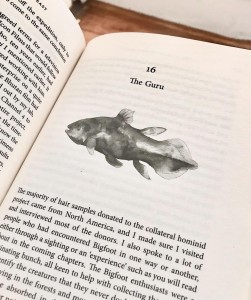
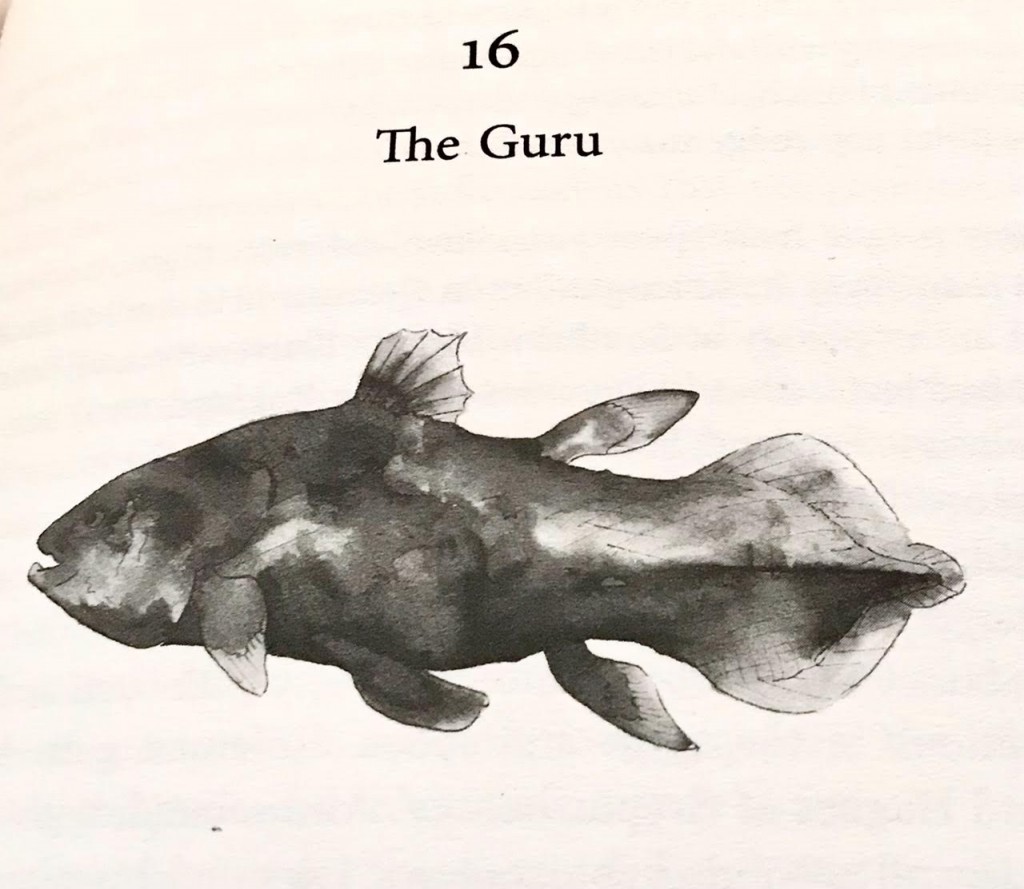

+++
On December 18, 2020, The Guardian published “Bryan Sykes obituary.”
A few snippets from it include these:
The human geneticist Bryan Sykes, who has died aged 73, pushed forward the analysis of inherited conditions such as brittle bone disease and double-jointedness, and was one of the first to extract DNA from ancient bone.
The same Bryan Sykes, holder of a personal chair at Oxford University, analysed hair supposedly taken from mythical hominids such as the Bigfoot and Yeti, and announced the results in a three-part television series. His delight in science and enthusiasm for communicating it to popular audiences were both aspects of an expansive personality that alternately inspired and exasperated his colleagues.
Sykes was not the only one to realise that the ability to read sequences of DNA code opened up the possibility of tracing human ancestry to our early origins. He was exceptional, however, in seeing that the wider public would connect emotionally to these stories if the dry details of the science could be presented accessibly. His book The Seven Daughters of Eve (2001) proposed that every living European could trace his or her ancestry to one of seven women living between 8,500 and 45,000 years ago. They, in turn, would share descent from a single Eve, who lived in Africa even earlier. He gave the seven women names and, anticipating people’s desire to know which “tribe” they belonged to, the same year set up the first direct-to-consumer genetic testing company, Oxford Ancestors, as an Oxford University spinout.
* * *
Sykes went on to use this method to solve the mystery of the origins of islanders scattered throughout the Pacific Ocean: whether they had arrived from the Americas, as Thor Heyerdahl had suggested on the basis of the 1947 voyage of the Kon-Tiki raft, or from Asia. Receiving hospital treatment on Raratonga in the Cook Islands after a motorcycle accident while on holiday in the mid-90s, Sykes realised he could resolve this uncertainty using mtDNA. He went on to collect samples from Pacific islands and Pacific Rim countries, and established that Polynesia was in fact entirely settled from Asia.
* * *
His collaboration with enthusiasts searching for the Bigfoot and Yeti raised eyebrows even higher. Hairs from bits of mystery creatures that had long lain in museums and temples made their way to his lab. The three-part Channel 4 series Bigfoot Files (2015) maintained the suspense to the end, but all the samples proved to come from known animal species. A hasty claim that a Yeti specimen was a match to a prehistoric polar bear proved to be a case of mistaken identity. For Sykes it was all education as entertainment – he never seriously believed that such creatures existed, but sought to encourage curiosity rather than squashing it.
* * *
Sykes met Sue Foden when she was a student in Oxford, and they were married in 1978. Though the marriage was annulled in 1984, he and Sue remained close and had a son, Richard, born in 1991. His later marriage to Janis Wilson ended in divorce. In 2007 he collaborated with the Danish artist Ulla Plougmand on an exhibition featuring the seven daughters of Eve, and their subsequent relationship lasted until the end of his life. In later years, as his health deteriorated, Bryan was increasingly supported and cared for by Sue. She, Ulla and Richard survive him.
* * *
+++
See also, “Sykes Team Error: Yeti DNA Matches Modern Polar Bear; BBC Compounds Error, Says It Was Himalayan Bear.”
The discoveries yet to be found in the DNA of the Pangboche “Yeti finger” may remain in the future, thanks to Dr. Sykes.
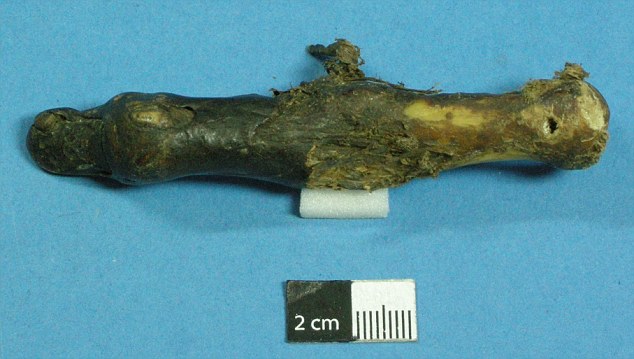
The Relict Hominoid Inquiry 4:67-74 (2015) contains Loren Coleman’s Book Review of
The Nature of the Beast: The First Genetic Evidence on the Survival of Apemen, Yeti, Bigfoot and Other Mysterious Creatures into Modern Times. By Bryan Sykes. London: Hodder & Stoughton, ©2014. 320pp. ISBN 978-1-444-79125-9. UK£25.00 (hardback).
One segment of Sykes’ book remains unrecognized by most involved in Yeti studies. I wrote (pages 73-74):
There is one more revelation in this book that caused me great astonishment. Few seem to have read the book closely enough to realize that part of the DNA testing that Sykes did gives a complete revision to the status of the Pangboche yeti finger findings of only four years ago, when it was dismissed asmerely “human.”
We all thought the Pangboche finger bone was lost. When it was found again, we all were told, it was merely that of a “human.” No mystery we were informed.
The result of the DNA analysis was announced on a program entitled “Yeti Finger” on BBC Radio 4 on December 27, 2011. The program stated: “A DNA sample analysed by the zoo’s genetic expert Dr Rob Ogden has finally revealed the finger’s true origins. Following DNA tests it has found to be human bone. …Dr Rob Ogden, of the RoyalZoological Society of Scotland, said: ‘We had to stitch it together. We had several fragments that we put into one big sequence and then we matched that against the database and we found human DNA. So it wasn’t too surprising but it was obviously slightly disappointing that you hadn’t discovered something brand new. Human was what we were expecting and human is what we got.’
Thanks to Bryan Sykes new book, The Nature of the Beast, we now understand that is hardly the end of the story. In Chapter 19 of his book, Sykes tackles the mystery of “The Pangboche Finger,” and the result he found is startling and shocking.
Ogden’s “human” DNA result was curious to Sykes, and Sykes knew he could find out what mitochondrial DNA it was aligned to. Sykes was able to find that it was “a European mitochondrial DNA sequence, in the clan of Ursula.” The notion that the “human” of the Pangboche finger might be from a monk had to be thrown out. Indeed, Sykes writes, “The Pangboche Finger sequence was almost certainly not from Nepal or anywhere else close by…” (page 194).
Sykes did the detective work, figured out who was the most likely candidate to have left his DNA on the finger, and compared them to cheek swab DNA he had collected.
Amazingly, what Bryan Sykes found through his testing was that the Pangboche finger DNA sequence matched “in every respect” the mDNA of Peter Byrne. The result means the Pangboche finger’s actual origin is still a mystery.
The Pangboche yeti finger was rediscovered while on display at London’s Royal College of Surgeons. The late Dr. William Charles Osman Hill, a consultant to the Tom Slick expeditions, bequeathed it to the Hunterian Museum, which is a division of the Royal College of Surgeons.
The Pangboche hand, the so-called yeti hand, has been the point of much discussion since 1959, which I summarized in Tom Slick: True Life Encounters in Cryptozoology (Fresno, CA: Craven Street-Linden Press, 2002). I began further researching the material, decades ago, when I noticed early in my yeti research that Tom Slick expeditions, the evidence he found, and any results weregenerally ignored in the “Abominable Snowman” literature. This appeared to be a combination of the Slick family’s need for being out of the limelight, the secrecy behind the Slick-Johnson expeditions, and the general outcome of the harsh skeptical debunking that occurred during the Hillary-Perkins-World Book yeti expedition of 1960.
After the first edition of my Tom Slick book was published in 1989, and my 1991 filming with George Agogino and Peter Byrne by NBC’s Unsolved Mysteries, the interest in the Pangboche yeti hand and the Slick expeditions increased.
Bryan Sykes has left one last mystery unsolved for other geneticists to unravel.
[...] Bryan Sykes Dies: Brought Genetics Credibility to Hominology Studies [...]
[...] http://www.cryptozoonews.com/sykes-obit/ [...]